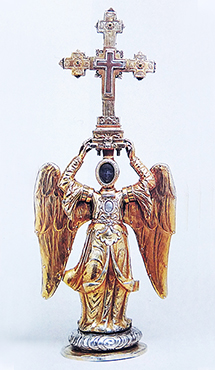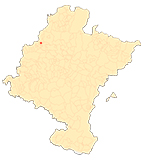San Miguel de Aralar
By Carlos J. Martínez Álava
Image of San Miguel de Aralar
It was necessary to get to San Miguel, essential protagonist of the set of faith, traditions and legends that embroider the mountainside. And this mythical, liturgical and spiritual St. Michael is embodied in a silver image with a wooden soul, which has been since the average es an object as adored as it has been prized. As we see him today, he is already represented, for example, in a 13th century capital of the front of the parish church of Berrioplano, demonstrating his traveling disposition.
The current silver coating that we see in the photograph dates from the middle of the 18th century; it was made by the Pamplona goldsmith José de Yábar. Beyond its spiritual value, the silver covering consolidated it in the popular imagination as an enormous wealth. Thefts or attempted thefts are documented in 1620, 1687 and 1797. The most recent research has revealed that the wooden core preserves traces of red cypress, originally from Palestine, and dates from the first century AD. An ancestral relic.
The poet Nicolás Ormarechea, Orixe, (1888-1961), born and raised in the area around the sanctuary (Oreja-Huici), wrote some verses that sum up the impact that the image of San Miguel and its sanctuary have always had on the community.
|
Orrela dabil erririk-erri |
This is how the Angel of Navarre walks from village to village |












